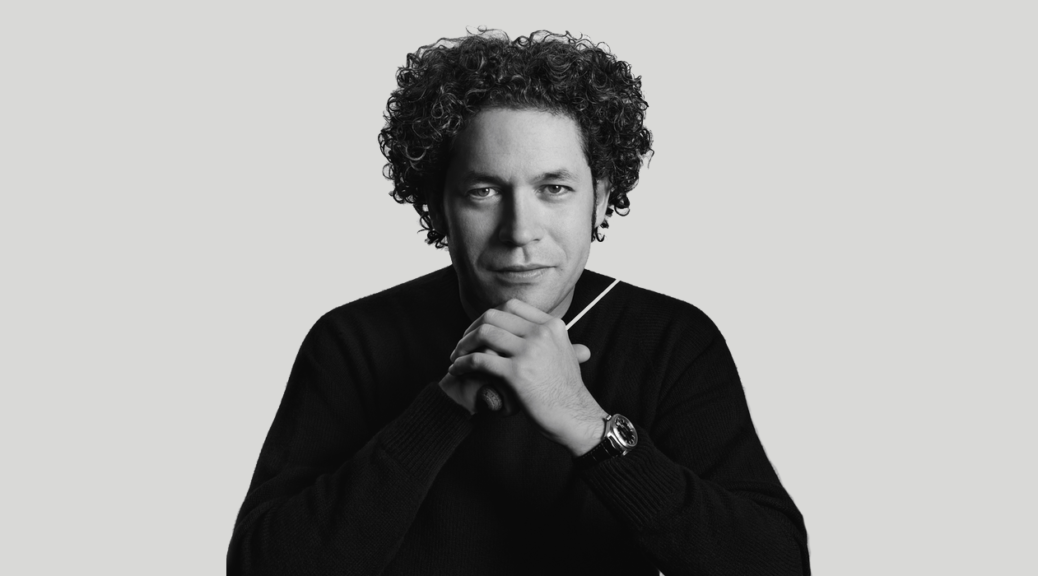
FIRE AND ICE: DUDAMEL CONDUCTS MAHLER
Guest conductor Gustavo Dudamel was back with gusto, leading “this foaming, roaring, raging sea of sound,” as Mahler once described his own raging Symphony No. 5. The Venezuelan led with fire—and no printed score—through this 71-minute masterpiece that Mahler’s compatriots in Vienna would call “gefühlsmȁssig”—surfeited with emotion. The crowd at Davies Hall stayed hushed in awe, without fidget or distraction, in hearing a master at work with the virtuoso San Francisco Symphony. Until the patrons’ jubilant ovations at the end.
Often lost in all the flames and embers of this night is the clarity and articulation of strings, one result of the conductor’s early violin studies. This refinement was already evident in the Mozart Symphony No. 38 (“Prague”) that went just prior, with a far smaller orchestra (devoid of Mahler’s army, which added trombones, cymbals, clarinets, harp, tuba, bass drum).
Under Dudamel, this was a virtuoso orchestra, prepped as if going on tour.
If Beethoven had the definitive Fifth for the 19th century, Mahler produced his own for the 20th century. This vast Fifth from 1902 runs the gamut from keys in the funereal minor mode, on a scale like Verdi’s, to the ultra-serene Adagietto for strings (these days the most often excerpted Mahler selection) Then onto a playful and exuberant final movement where, if anything, the heavens appear to open up, suggesting perhaps that all is well after all.
Quite simply, every one has feelings. But Mahler had them ever more intensely, high drama all the way, from groveling despair to unsurpassed exultation, and was able to set them to music with his vast musical forces. And, working without a score, Dudamel was unafraid to let them all ring out. Today he occupies a unique position among Latin American podium figures, creating not only great music but also recognized as one of the most important music educators (via El Sistema) of recent decades.
There were many highlights, from the opening growling basses simulating earthquakes up to the flutes and the shimmering trumpet solos of Mark Inouye. And in between, the softest pianissimos of which strings are ever capable. And did we mention the exquisite crescendos, the chattering woodwinds, and the versatility of Robert Ward and his horn section, at times with bells turned upward to provide a more country-village sound?
The focus and intensity from the podium waned only in the finale—mobile, but less engrossing.
The April 21 program had opened with the Mozart Symphony No. 38 in which the brass vied to be dominant. Consummate refinement, with the roars all held back till later.
MUSIC NOTES—Dudamel, now in his 40s, led throughout from memory. He may have been the shortest man on stage, but once again, he stood tall. This was a rare Northern California appearance, as he also leads the L.A. Philharmonic on a heavy schedule. Also a year ago he was named the music director of the Paris Opera, a surprise venture given his heavy symphonic immersion over the years.
SAN FRANCISCO SYMPHONY with guest Gustavo Dudamel on the podium in Mahler, Mozart, through April 24. For info: (415) 864-6000, or go online: www.sfsymphony.org.